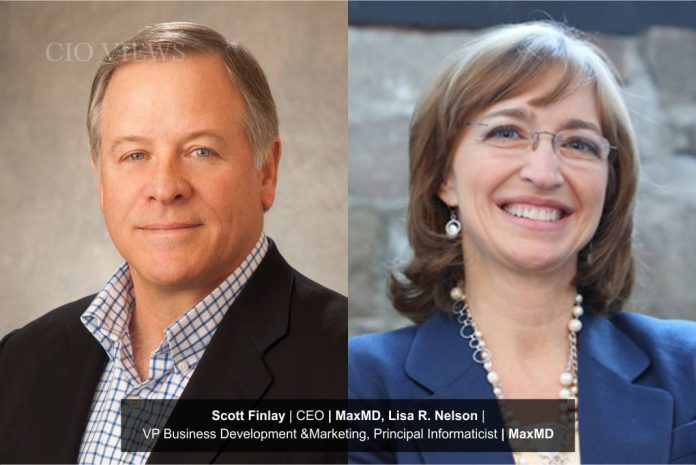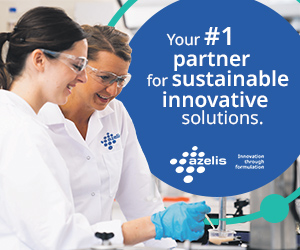MaxMD’s Recipe for Success
MaxMD is leveraging health information technology standards to accelerate improved results for healthcare interoperability. “Our approach promotes data liquidity and accelerates interoperability by combining the power of available standards with the creativity of entrepreneurial innovation,” says MaxMD Business Development VP Lisa Nelson. The company specializes in the secure exchange of protected health data, using a distinctive approach that engages customers and the community in their creative process.
MaxMD pioneered the concept of creating a secure healthcare domain on the World Wide Web. They filed for and received a patent. Subsequently, the U.S. Office of the National Coordinator for Health Information Technology announced the Direct Protocol, a standard for securely exchanging health data. MaxMD recognized the power of this standard, adjusted their plan, and became a founding member of DirectTrust, the standards development organization chartered with maintaining the Direct Protocol standard. This early choice exemplifies MaxMD’s dedication to leveraging standards to accelerate innovation and respond to customer and industry needs.
MaxMD runs on two basic operating principles: #1. The best idea wins. MaxMD CEO Scott Finlay always says, “No one has a corner on the good idea market.” At MaxMD, each team member, from the newest recruit to the most senior leader, is encouraged to give voice to their thoughts and contribute their best ideas, even if it seems to contradict the team’s current plans. #2. Listen to your customers. “We learned early on to let our customer’s needs guide the solutions we develop,” Finlay explains. The founders of MaxMD didn’t come from within healthcare. “We’ve overcome skepticism about our healthcare knowledge by building customers exactly what they explained they needed. We realized being good listeners was a strategic advantage.”
“Standards are good ideas the industry cooks up together,” says Nelson. “Using standards makes MaxMD all the more innovative and ready to implement fresh ideas. We can develop more beneficial solutions faster because we’re listening to the needs of the whole community,” says Nelson. Nelson is a major contributor in the standards development work at Health Level Seven (HL7), where the Fast Healthcare Interoperability (FHIR) and Clinical Document Architecture (CDA) standards are developed. “We’re working to accelerate the pace of change and enrich the value of information exchange for our customers,” she says.
Many companies and solutions begin with a focus on the information that they want to gather, or the interface they want to offer. All too often, security and trust are not a developer’s first concerns. MaxMD has taken the opposite approach, making trusted endpoints and secure communication a primary ingredient. “Our solutions build upon our foundational security and trust capabilities within DirectTrust as an EHNAC accredited Health Information Service Provider, Certificate Authority and Registration Authority,” Finlay explains. “It makes our services more scalable. Our customers can instantly interoperate with over 1.9 million trusted endpoints in the DirectTrust network.”
Today, MaxMD stays at the forefront of developing standards, such as work being done through the HL7 Accelerator Program. They support initiatives such as the Da Vinci Project, where payers drive standards development that supports the shift to value-based care. They play a leadership role in the Gravity Project, where a multi-stakeholder community is looking at data coding needs for social determinants of health information. They drive the continuous improvement strategy for HL7 Consolidated CDA standard—the current mainstay interoperability standard in healthcare. MaxMD keeps their customers on the leading edge of standards-based innovation. “Leveraging emerging standards future-proofs our customer’s investment and reduces the cost of ownership over time,” Nelson says.
As a result of this approach, the company has developed a flexible suite of standards-based capabilities that they mix and match to meet the widespread needs of their diverse customer base.
MaxMD’s data integration engine reformats payloads in transit to facilitate communication between disparate legacy systems that may use different standards or no standards at all. The company’s rules engine supports bidirectional data exchange by routing messages and payloads to multiple stakeholders based on established subscriptions to the information. HL7 standard Digital signature capabilities allow for the creation, exchange, and signing of legally enforceable, unalterable documents and forms. Data provenance is ensured by embedding a digital certificate and creating an irreversible hash of each signed document. Data validation and automated data quality assessment capabilities create continuous data improvement loops between data-sharing partners. A Natural Language Processing engine for real-time information extraction analyzes narrative text and adds data coding to make unstructured clinical information more actionable. It’s all aimed at more cost-effective information sharing that improves care delivery and health outcomes.
MaxMD combines these capabilities to deliver straightforward solutions like event notification systems that deliver actionable alerts and rich data payloads. MaxMD also delivers more comprehensive solutions like their Registry/Repository platform, which receives information from a wide range of information sources and indexes the information to make it more accessible and reusable.
The company’s solutions are designed to meet the needs of HIT vendors, providers, payers, and patients. The MaxMD mobile app, available for both Android and iOS devices, allows users to securely query medical records using Direct or FHIR APIs, making it easy to take advantage of innovations like the CMS Blue Button 2.0 standard that gives Medicare beneficiaries access to their health information. The user’s trusted identity authenticates and authorizes requests for information.
The MaxMD mobile app is white-labeled and packaged with their platform to connect customers, such as accountable care organizations or integrated delivery networks, with the providers and individual members they serve. The app provides an easy, familiar channel to deliver alerts and reminders or to gather information via structured forms and surveys. It augments existing portal strategies, providing information access without the portal logon burden and delivering information at the right time, helping patients be more engaged in their own care coordination.
The MaxMD Clinical Gateway is a comprehensive solution designed specifically for payers. This solution uses MaxMD’s robust Registry Repository platform and bidirectional communication capabilities to automate the flow of clinical data and documents between payers, providers and individuals. It combines MaxMD’s full set of innovations with standard H7 Fast Health Interoperability Resources (FHIR) APIs and the DirectTrust trust framework to produce a highly scalable solution that reduces the cost of “chasing charts” and increases efficiency in the use of clinical information for quality programs and risk-adjustment analysis.
MaxMD blends several of its capabilities to create standards-based, event-driven Community Information Exchange (CIE). The CIE platform uses the MaxMD HISP, rules engine, and data integration engine to automate event notifications directly to participating organizations, eliminating the need for human intervention to facilitate this important flow of information. Whenever a person receives care at an inpatient setting, the admission, transfer, and discharge events and patient information updates are shared automatically in the format preferred by various recipient health IT applications and devices. This allows healthcare organizations to provide faster, more effective follow-up services to recently discharged patients.
In central Minnesota’s Carlton County, the MaxMD CIE solution makes it possible for two hospitals, four health agencies, Indian health services, home health services, three ambulatory care clinics, a nursing home, and an assisted living center to share information that is improving care coordination across the community.
Protected health information (PHI) is created and consumed in many different ways by a variety of organizations and settings throughout the healthcare industry. Despite different information appetites, MaxMD has found the healthcare community shares many similarities. MaxMD serves standards-based solutions that feed legacy systems the data they need, and yet supply the most advanced information-sharing capabilities envisioned by the industry. Healthcare organizations and HIT systems thirsty for information to coordinate care, reduce costs, and improve patient outcomes benefit from MaxMD’s innovative approach to standards-based interoperability services and the data liquidity they create.





